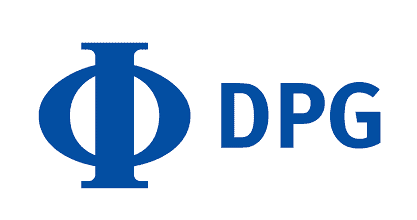The Spring Meetings of the German Physical Society have been cancelled, but you can still check out some of the products that would have been on show in Hannover, Dresden and Bonn

The rapid spread of the coronavirus is continuing to affect the international calendar of scientific conferences, with the German Physical Society (DPG) announcing that all three of its Spring Meetings due to take place in Hannover, Dresden and Bonn are now cancelled. “Given the dynamic development in the spread of the virus we do not want to take incalculable risks for all those involved,” the society said in a statement.
The executive board of the DPG says that it “particularly regrets the loss of scientific communication”, while acknowledging that travel restrictions would have limited the opportunities for discussion with international colleagues and research collaborators. Despite the unforeseen circumstances, the organization remains committed to finding alternative formats to enable some form of scientific exchange, with plans to stream part of the Dresden programme online.
Delegates will also miss the chance to learn about the latest improvements in experimental technologies. While nothing beats a face-to-face conversation or live demonstration, here are some of the product innovations that would have been featured at the show, along with full details of how to find out more.
The right lock-in amplifier for your application
Zurich Instruments, a test and measurement specialist based in Switzerland, produces lock-in amplifiers that operate over every frequency range up to 600 MHz. Various upgrades can be added to each of the basic instruments, such as control-loop mechanisms, digitizers or multi-frequency operation, to extend their capabilities for specific applications without needing to invest in unnecessary features.

Zurich Instruments’ flagship instrument, the UHFLI lock-in amplifier, delivers state-of-the art performance for applications such as laser spectroscopy and quantum technologies. Thanks to its low time constant for demodulation of 30 ns, its demodulation bandwidth exceeds 5 MHz – which is also ideal for scanning imaging applications that require speeds up to video rate.
The HF2LI lock-in amplifier covers the frequency range from DC to 50 MHz, and is the instrument of choice for characterizing sensors and actuators, as well as for non-destructive testing and medical technologies. Meanwhile, the MFLI lock-in amplifier comes in two versions: one operates up to 500 kHz, while the other extends the frequency range to 5 MHz. Its embedded data and web servers enable it to be used with any device running a web browser, without the need for software installations.
All of the instruments are equipped with the control software LabOne, which offers a comprehensive toolset for time- and frequency-domain data analysis as well as sophisticated support for setting up control loops, performing noise measurements, and visualizing measurement data. Interfaces for most popular programming languages are also available.
Full details are available on Zurich Instruments’ website, or contact info@zhinst.com to arrange a video call.
AFMs enable next-generation characterization
The Dimension XR family of scanning probe microscopes (SPMs) from Bruker incorporate major innovations for atomic force microscopy (AFM) that significantly expand researchers’ ability to quantify material properties at the nanoscale – whether in air, fluids, electrical, or chemically reactive environments. New additions include a unique nanoelectrical mode called DataCube, scanning electrochemical microscopy for energy research, and an AFM-nDMA mode that for the first time correlates polymer nanomechanics to bulk mechanical properties.

Dimension XR SPMs are based on Bruker’s popular Icon and FastScan AFM platforms. They are available in three configurations that provide out-of-the-box capabilities for measuring mechanical, electrical, or electrochemical properties at the nanoscale.
To start with, the nanomechanics configuration combines AFM-nDMA with other advanced modes for fast, quantitative analysis of materials ranging from soft hydrogels to metals and hard ceramics. For nanoelectrical applications the Dimension XR configuration delivers the most complete array of electrical AFM techniques on a single system. This includes the new DataCube mode, which captures both electrical and mechanical characteristics in a single measurement, along with several other modes that extend conventional contact-based electrical modes to correlative electrical and mechanical data.
Meanwhile, the NanoEC configuration exploits Bruker’s unique nanoelectrode probes to perform in-situ topography scans in the electrochemical environment, providing a turnkey solution for real-time quantitative analysis of nanoscale local reactivity. This configuration includes an SECM mode that captures topographic, electrochemical, electrical, and mechanical information with a spatial resolution of below 100::nm.
Visit Bruker Nano Surfaces to find out more about Bruker’s full range of instruments for nanoscale surface analysis
Turbomolecular pumps deliver smart monitoring and control
Agilent Technologies has for the first time added smart connectivity to the latest two additions to its extensive range of TwisTorr turbomolecular pumps. An app called Vacuum Link, which can be installed on Apple or Android phones, enables users to communicate remotely with either of the pumps, making it possible to quickly and easily modify parameters and control the pump’s operation.

“Incorporating connectivity into this new range of turbo pumps makes them unique and means users can always stay on top of their experiments,” comments Giampaolo Levi, who heads up Agilent’s Vacuum Products Division. “These pumps are designed to be another milestone move in the digitalization of the lab.”
The two new pumps also feature a more compact design. The TwisTorr 305 FS model is a standalone unit with an external remote controller, while the TwisTorr 305 IC version features an integrated controller. Its small footprint makes it ideal for equipment manufacturers and other companies that may want to integrate the pump in their instrument, and also allows it to be installed in smaller spaces and mounted in any position.
An advanced function in the Vacuum Link app enables users to extract log files to access and share the pump’s operating data. It also enables direct communication with Agilent’s service and support teams, speeding up the response time.
Agilent says that its TwisTorr turbomolecular pumps offer high compression ratios and pumping speeds, and are also reliable and energy efficient. They can also be used with smaller backing pumps to save space and money.
Explore Agilent’s full range of turbomolecular pumps on the company’s website.



